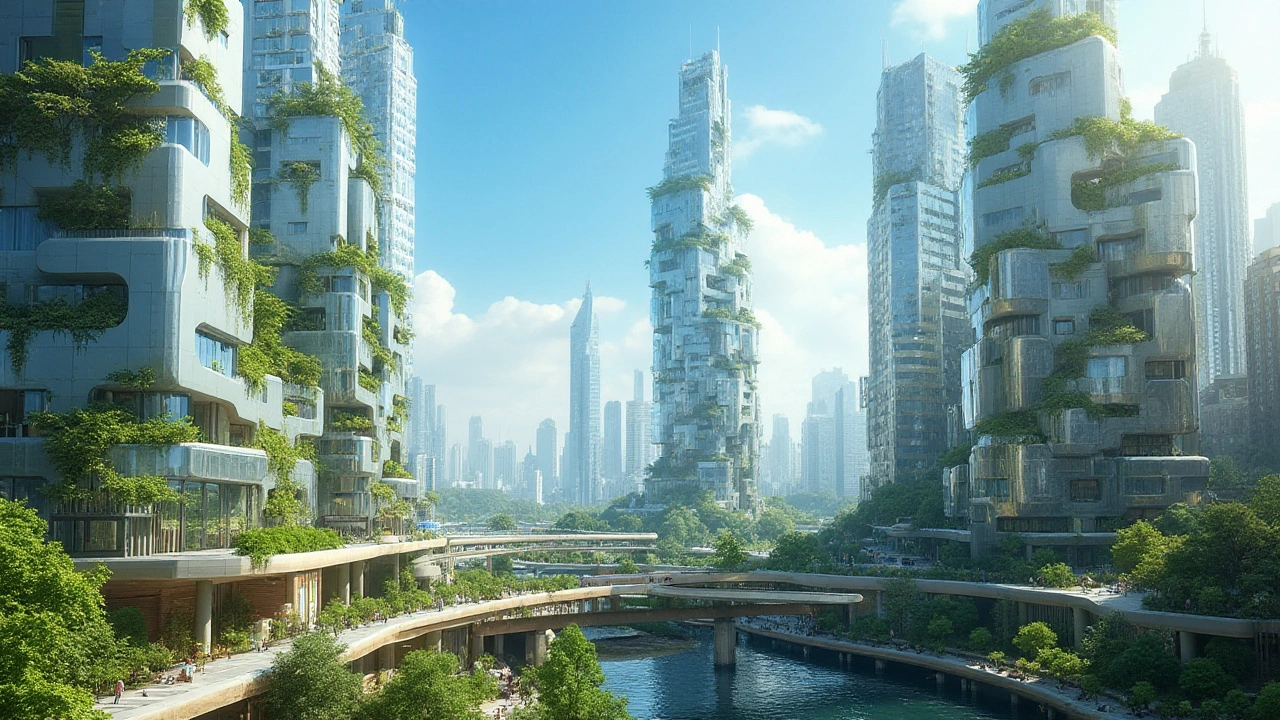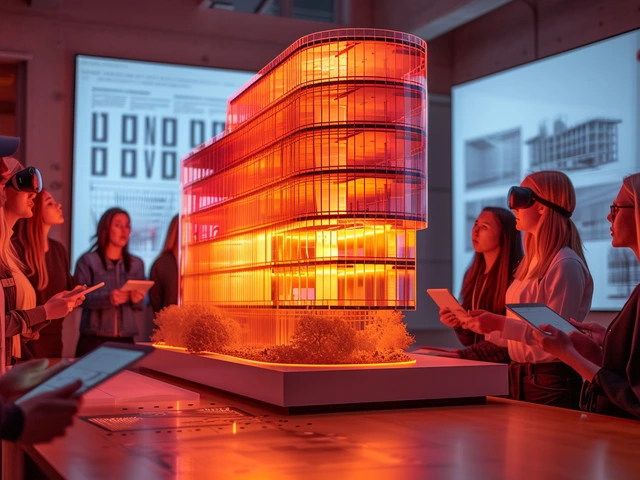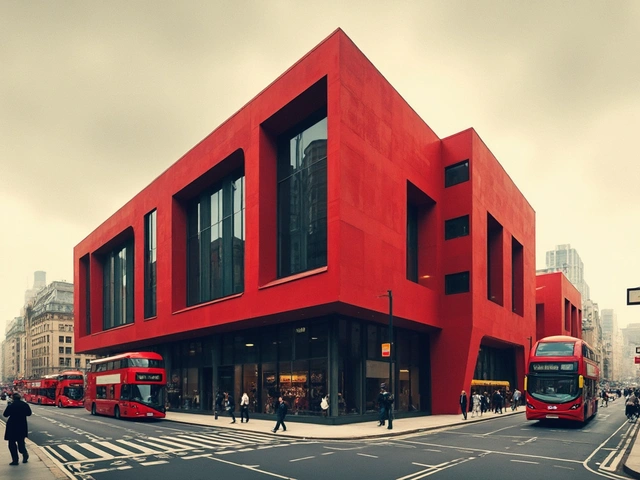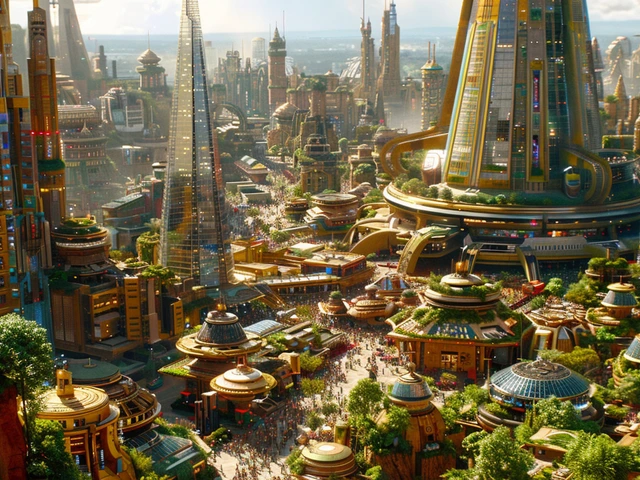In a world where technology permeates every aspect of our lives, it's no surprise that architecture is experiencing a revolutionary shift. High-tech architecture is not merely a design philosophy; it's a response to the growing demand for buildings that meet the challenges of the 21st century. These structures often embody a blend of bold, futuristic aesthetics and cutting-edge technology, resulting in environments that are intelligent, resilient, and incredibly efficient.
As cities become the beating heart of innovation and culture, the role of architecture extends beyond shelter. High-tech designs are redefining urban landscapes, making them more adaptive and sustainable. By leveraging innovative materials and smart systems, architects are creating spaces that respond intuitively to their inhabitants and the environment. These advancements do not just enhance convenience and comfort; they play a crucial role in promoting sustainable living.
The beauty of high-tech architecture lies in its practicality intertwined with visionary concepts. It’s where imagination becomes tangible through technology, pushing the envelope of what’s possible. This article delves into the components of high-tech architecture and reveals how it is shaping a smart future, designed to thrive amidst global challenges. Join us as we explore the remarkable journey of these architectural marvels, from inception to execution.
- The Evolution of High-Tech Architecture
- Innovative Materials and Tech Integration
- Sustainability and Eco-Friendly Strategies
- Real-World Applications and Case Studies
The Evolution of High-Tech Architecture
High-tech architecture represents a pivotal moment in the architectural timeline, where the lines between engineering and aesthetics beautifully blur. Emerging prominently in the 1970s, this architectural style was a response to the era's rapid technological advancements and a swelling optimism that technology could indeed solve many of the world's problems. These designs are typified by their embrace of a futuristic look often characterized by exposed structural elements which were once concealed. High-tech architecture liberated these elements, transforming them into integral design features that celebrated the building's functional components. High-tech architecture thrives on transparency, both literal and metaphorical. By highlighting structures, it unveils the functionality behind the facades, an approach pioneered by architects like Richard Rogers and Norman Foster. Rogers, with his iconic Pompidou Centre in Paris, turned the institution inside out. Pipes, ducts, and support systems once hidden away were brought to the forefront, becoming a symbol of the building’s modern innovation.
This style of architecture has never shied away from borrowing from the industrial world. The use of materials such as glass, steel, and reinforced concrete were not just fashionable choices but a conscious push towards functionally expressive structures. High-tech architecture does not rely on ornamentation but lets the inherent beauty of the structure and materials take center stage. Moving towards the 21st century, the evolution of high-tech architecture has been shaped by an increasing awareness of environmental sustainability. Concepts such as intelligent building systems and energy efficiency became predominant, with designs increasingly focusing on adapting to and reshaping our environments responsibly. As remarked by Norman Foster, "The green agenda is about wholeness and regeneration, making things better, now and for the future."
Today, high-tech architecture continuously evolves, increasingly integrating digital advancements. Think of skyscrapers whose facades change with the weather, or buildings equipped with smart technology that adjusts to ambient conditions, making life more convenient and cutting utility costs. This adaptive nature is a testament to the ongoing love affair between technology and design. Architects around the world are now utilizing computer-aided design and manufacturing, allowing for precision that was previously unimaginable. As buildings become smarter, so too do the architectural narratives they represent. The Virgin Galactic Spaceport in New Mexico showcases the next frontier for high-tech architecture, standing as a springboard for space tourism and future possibilities in architectural design.
High-tech architecture's evolution reflects a journey from simply using technology to enhancing aesthetic appeal towards leveraging this technology to create more efficient and sustainable environments. As technology advances, so does the potential for architecture to innovate. These future-proof designs show us how technology will continue to shape not just our physical environments but also our roles within them, pushing us ever closer to a perfectly integrated future.
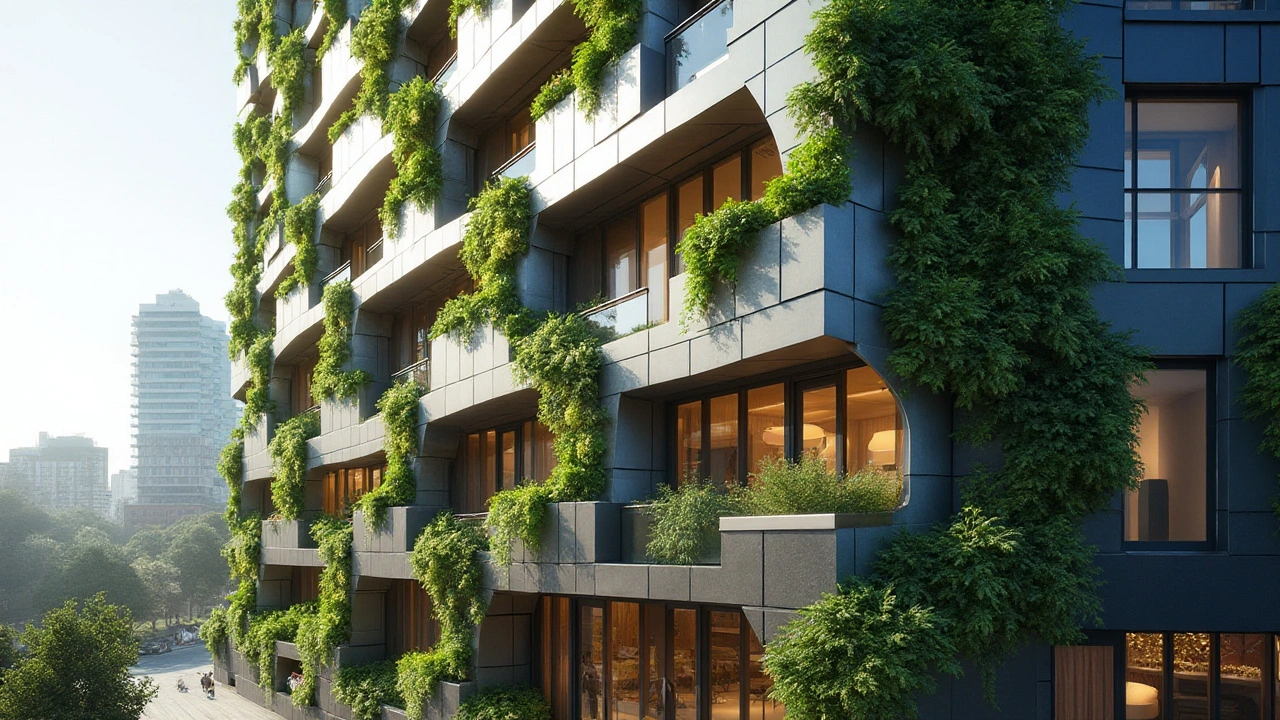
Innovative Materials and Tech Integration
The convergence of groundbreaking materials and smart technologies is at the heart of high-tech architecture, steering the construction industry into uncharted territories. Architects are now empowered to craft extraordinary structures, lending new meaning to the phrase 'form follows function'. At the crux of this innovation are materials designed for resilience and flexibility, helping buildings adapt to environmental shifts and user needs alike. For instance, adaptive glass facades are no longer a vision of the distant future but a present-day marvel, regulating light and temperature to reduce energy consumption. These dynamic panels often come equipped with sensors and adjustable mechanisms, ensuring they respond in real-time to the changing climate outside, keeping interiors comfortable and sustainable.
The integration of smart technology within these materials is no less revolutionary. Building Information Modelling (BIM) systems are utilized, not just during the design phase but throughout the building's lifecycle, managing energy consumption and predictive maintenance. Smart concrete is another exciting development, imbued with sensors that detect stress and damage, heralding a shift towards proactive maintenance strategies. It's fascinating how these materials are not merely passive frameworks but active participants in ecosystem synergy, elevating their architectural value. A recent study highlighted that the adaptation of smart materials can reduce building maintenance costs by up to 30%, proving that these innovations are as economically savvy as they are technologically superior.
"The buildings of tomorrow won't just be stronger or taller. They will be smarter, dynamically adapting to the environment and the people who use them," says renowned architect and technologist Dr. Clara Evans.
Moreover, the application of 3D printing in constructing intricate building components has seen an exponential rise. This technique allows for precise and intricate designs that were previously deemed too complex with conventional methods. Architects now have the freedom to create bespoke components, pushing aesthetic boundaries while minimizing waste—essentially achieving more with less. The use of alternative components like graphene, known for its electrical conductivity and strength, ushers in a new era of both structural integrity and aesthetic possibilities. Its application ranges from enhancing energy efficiency to serving as a durable yet lightweight external facade, showcasing versatility at its finest.
As material science advances, the potential of high-tech architecture continues to expand. Technologies such as augmented reality (AR) and virtual reality (VR) play a crucial role in the design and execution phases, allowing architects to visualize and perfect their designs in real-time. By overlaying digital information onto the physical environment, architects can simulate the effects of light, wind, and human interaction, refining details before the first brick is laid. The symbiotic relationship between innovative materials and technology signifies a new epoch in architecture, where sustainability meets creativity without compromise. In turn, these evolving elements represent more than mere building materials—they are the essence of futuristic living spaces, ready to tackle any challenge the future holds.

Sustainability and Eco-Friendly Strategies
In the realm of high-tech architecture, sustainability isn't a mere add-on—it's the cornerstone of innovation. As cities continue to sprawl, high-tech architecture offers solutions directly addressing the demand for eco-friendly living spaces. One of the core principles of this approach is the integration of renewable energy sources into building designs. Solar panels, now more efficient and aesthetically pleasing, are being cleverly incorporated into rooftops and facades. These photovoltaic cells not only provide energy but can be integral parts of the design, creating a seamless look that merges technology with visual appeal. Wind energy is also increasingly harnessed in urban settings, with small-scale wind turbines being integrated into skyscrapers.
Water conservation plays a vital part in these sustainable strategies. High-tech buildings often include systems that collect rainwater for various uses within the building, reducing reliance on municipal water supplies. Greywater systems, which recycle water from sinks and showers to be reused for irrigation or toilet flushing, are becoming a common feature. This approach not only reduces water waste but also cuts down on energy use since less water is needed to be pumped and treated. As statistics suggest, buildings that integrate these systems can slash water use by up to 50%, a significant saving considering the global push towards reducing environmental footprints.
The materials used in high-tech architecture are equally significant. Cutting-edge composites, light yet durable metals, and smart glass that adjusts transparency based on sunlight intensity are transforming building envelopes. These materials not only enhance aesthetic appeal but also improve thermal efficiency, reducing heating and cooling demands. An intriguing innovation is the development of biophilic designs, which incorporate natural elements like living walls. Such features not only enhance insulation but also improve air quality and create a calming environment. A noteworthy trend is using 3D-printed components, enabling precision and reducing waste. As stated by a leading architect, "The promise of 3D printing in architecture lies in its ability to minimize resource use while maximizing design possibilities."
Modern design principles are constantly evolving to encourage sustainability. Smart lighting systems adjust based on occupancy and natural light, significantly lowering energy usage. Intelligent HVAC systems learn and adapt to users' habits, ensuring optimal comfort while being resource-efficient. Additionally, the Internet of Things (IoT) allows for seamless integration of different building systems, ensuring they operate at their peak efficiency and offer personalized environments. The potential savings in energy and reduction in emissions these systems represent are as crucial as they are promising for future urban developments. In a bid to provide evidence-based insights, here's a snapshot of potential savings from sustainable strategies:
| Strategy | Potential Savings |
|---|---|
| Intelligent HVAC Systems | 30% reduction in energy use |
| Smart Lighting | 40% reduction in electricity use |
| Water Recycling Systems | Up to 50% reduction in water use |
These sustainable practices embody a growing recognition that futuristic buildings must coexist harmoniously with their environment. As we look forward, the path high-tech architecture is carving out is not just one of technological advancement but of ecological responsibility and resilience. By embracing these eco-conscious strategies, architects are ensuring that the built environment can sustain not only its inhabitants but also the planet at large.
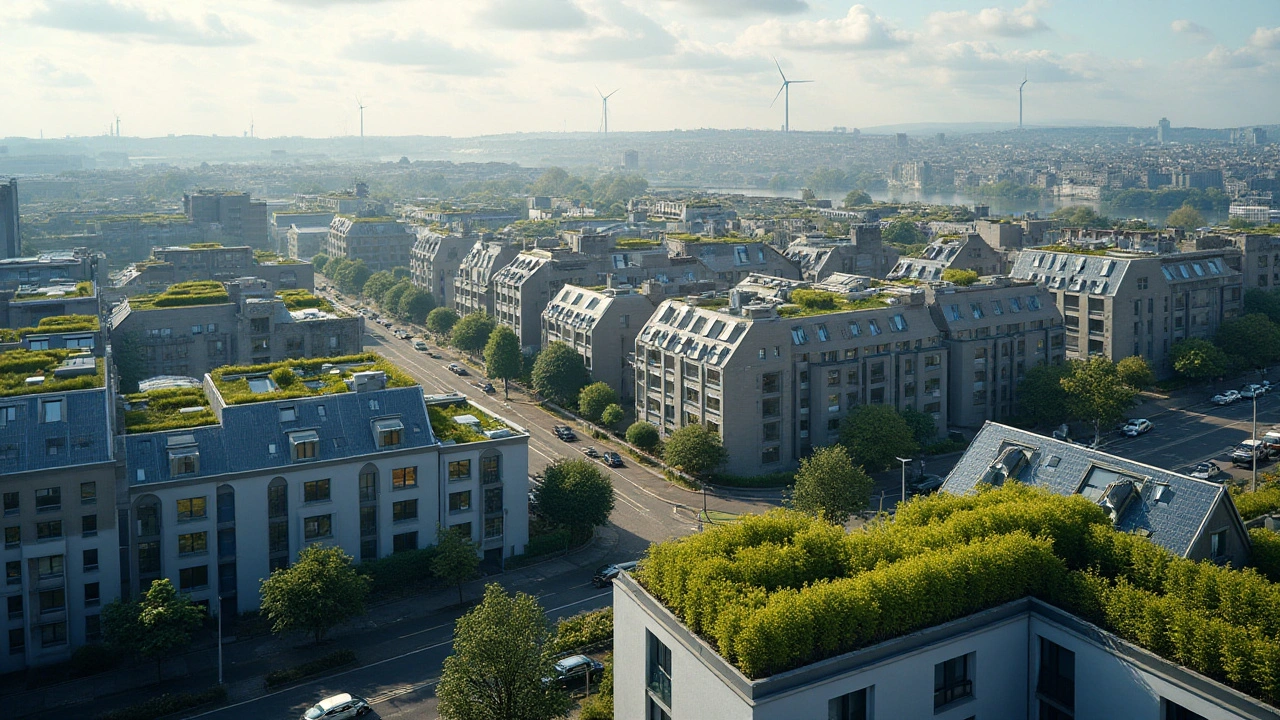
Real-World Applications and Case Studies
High-tech architecture's influence is increasingly visible in the skyline of cities across the globe. These stunning edifices are more than just eye-catching; they are functional, advanced solutions to metropolitan needs. Take, for instance, The Edge in Amsterdam. Touted as the world’s smartest building by some, it harnesses a plethora of smart technologies to create an ecosystem that is incredibly efficient. The lighting system alone, developed by Philips, utilizes Power-over-Ethernet to adjust light levels according to external conditions and room occupancy, drastically cutting down energy consumption. This high-tech marvel serves as the headquarters for Deloitte, and it is a true embodiment of cost-efficiency meeting environmental consciousness.
Moving across the Atlantic, New York’s Via 57 West is another exemplar of modern-day innovation. Designed by the renowned Bjarke Ingels Group, this residential building introduces a unique “courtscraper” model by merging a courtyard with a skyscraper. This design not only maximizes light and air circulation for each apartment but also offers residents stunning views. The building features several integrated systems such as air filtration, water recycling, and energy-efficient appliances, all harmonizing to create a sustainable urban habitat. The high-tech architecture initiatives here have paved the way for future developments aiming to blend community-friendly designs with architectural brilliance.
In Southeast Asia, the Marina Bay Sands in Singapore stands out not just for its striking appearance but its technological infrastructure supporting thousands of guests daily. The integrated resort boasts of advanced security systems, automated check-ins, and intelligent space management to enhance guest experience while maintaining security and functionality. The significant reliance on smart technology ensures operational efficiency, making it a benchmark for hospitality combined with urban utility. Such examples of high-tech architecture are not just structural feats but testimony to how futuristic visions can cater to contemporary demands.
Let’s consider the educational sector where high-tech architecture is making waves. In Melbourne, the Melbourne School of Design reflects the pinnacle of educational architecture. Designed to be a ‘living building,’ it uses an extensive array of sensors to adapt its internal environment to enhance learning conditions. Windows automatically adjust to control heat and light, and an advanced HVAC system maintains optimal air quality. The building’s framework is inherently designed to be educational, showcasing exposed mechanical and structural systems as teaching tools for students pursuing architectural studies. This fusion of learning and technology creates an interactive, dynamic space that enriches the educational journey.
Finally, automobiles have not been left untouched by high-tech architectural principles. Car manufacturing plants such as Tesla’s Gigafactory 1 in Nevada employ design techniques that are both eco-friendly and efficient. Solar panels adorn the roofs, and intelligent resource management systems ensure minimal waste and maximum productivity. The factory’s structure itself is optimized to allow for streamlined operations and hosting state-of-the-art machinery. These are not just faceless production lines but thoughtfully designed spaces that contribute to sustainable production and reduce environmental impact. The future of urban and industrial spaces seems bright and endless as high-tech architecture continues to evolve and adapt.

